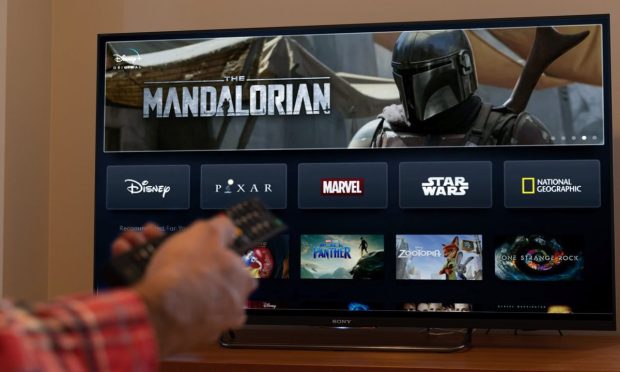Streaming Services Grow with Bundling, But Market Watchers Expect a Reckoning

Subscriptions are popular and growing, but consumers are past the novelty of new streaming channels and set to make some tough choices in 2022 on how to buy their streaming TV.
Disney’s first-quarter earnings give a glimpse into gyrations within the streaming content sector as companies navigate shifting subscriber priorities that are getting choosier. With the big streaming players facing a possible subscriber revolt, it’s shaping up like a show to binge-watch.
Entertainment industry news site Deadline reported that “For the first time, Disney broke out subscriber numbers for the U.S. and Canada compared with numbers for outside of those countries. There were 42.9 million subscribers at the end of the quarter, and average revenue per user (ARPU) was $6.68, up 15% from a year earlier.”
CNBC reported that “Disney Chief Executive Officer Bob Chapek reaffirmed the company’s target of reaching 230 million to 260 million Disney+ subscribers by 2024. Disney has 129.8 million Disney+ subscribers globally, including India’s Disney+ Hotstar, which accounts for 45.9 million of the total.”
See also: Disney Investors Are ‘All Ears’ to See if Reopened Parks, Streaming Momentum Will Continue
Disney+ launched in 2019 offering a $12.99 bundle of Disney+, ESPN+ and Hulu. Successive bundles have come and gone, with that bundle now at $13.99, or $19.99 a month for subscribers who like their Hulu experience to be ad-free.
Compare that to Netflix, whose monthly plans run from $9.99 for Basic, $15.99 for Standard, and $19.99 for Premium. All Netflix plans allow for unlimited viewing of content on the platform; pricing tiers reflect the number of screens and devices allowed on each account.
Netflix has approximately 222 million subscribers at present.
During its latest earning release, CNBC reported that Netflix “expects to add 2.5 million subscribers during the first quarter of 2022, far below the 3.98 million it added in Q1 2021. Meanwhile, analysts had expected 6.93 million in the first quarter.”
See also: New Streaming Dynamics Threaten Netflix, Subscriber Growth
HBO Max has two tiers — $9.99 with ads and $14.99 without. Amazon Prime announced a price increase on Feb. 3, with its subscription cost rising to $14.99 monthly or $139 per year. Prime has approximately 157 million subscribers who get streaming as part of that price.
That’s just a snapshot of the streaming choices and endless combinations which kept people amused while stuck at home for two years but are now judged as part of household budgets.
As Roy Barak, head of subscription management platform Vindicia, recently told PYMNTS’ Karen Webster, “We, as consumers in this space, are likely undercounting and under-thinking about how much access to streaming service we actually have,” adding that, “At some point, the market will be oversaturated.”
Sooner or later (and signs point to sooner), these market dynamics will start showing up in those subscriber totals, meaning streaming services will need to be laser-focused on reducing churn.
“As we see this market mature, we are going to see a lot more focus on retention,” Barak said.
“We saw what happened in the market [in January] with some streaming subscription services taking a hit because their growth slowed. There is a finite number of consumers each company can reach. It’s a matter of how you can retain those consumers for the long run.”
Players like Sling TV are offering “build your own” options where consumers pay $35 to $50 per month and select from a variety of streaming channels, effectively creating their own bundles.
See also: Streaming Providers Eye Commerce to Win and Keep Subscribers in 2022
The boom in subscriptions of all kinds since early 2020 is one of the biggest success stories of the pandemic, with streaming proving the runner-up for most popular.
According to The 2021 Subscription Commerce Conversion Index, a PYMNTS and sticky.io collaboration, “the number of consumers with retail subscriptions increased by 99 percent since 2020, and 20 percent of consumers have access to at least one subscription. The only other type of subscription to come close in growth are those for digital media products, as the number of consumers with such subscriptions increased by 92 percent in the same timeframe.”
Get the study: The 2021 Subscription Commerce Conversion Index
